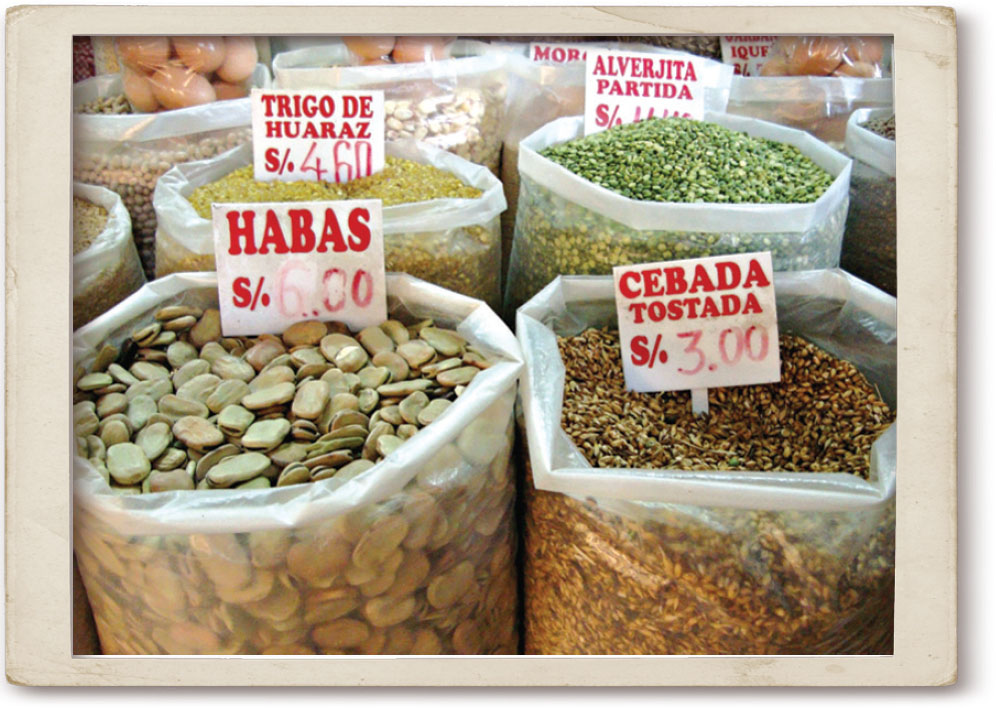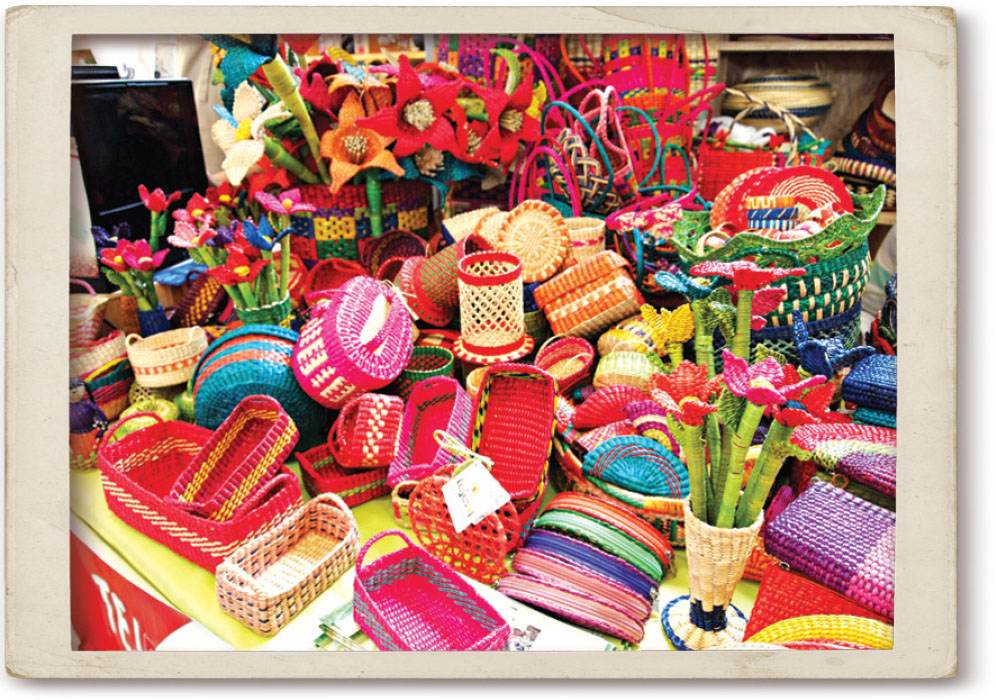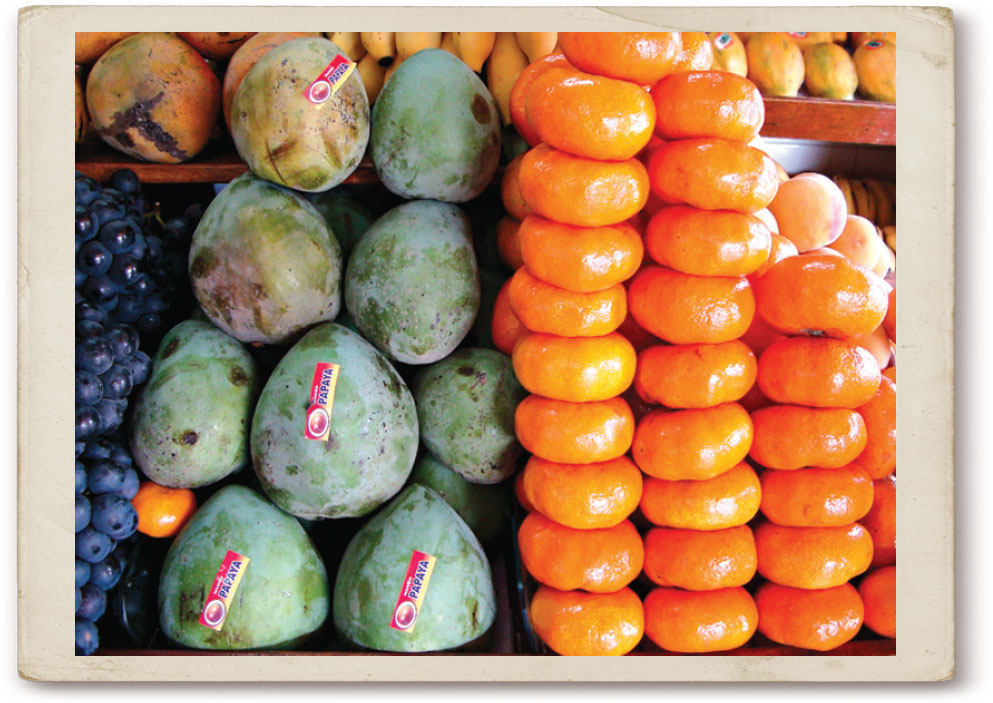

The markets found all over Peru are magical places where customers can find everything they are looking for, whether it be fresh produce, seafood, groceries, crafts, or any other item. I see these as mini versions of Persian markets, loud and crowded, with thunderous music playing on several radio outlets, and continuous chatter and laughter in every stall.

Everywhere you turn, these food havens display endless varieties of fruits and vegetables from the small valleys in the coast, from the Andes, and from the lush Amazon jungle. The varied geography offers an unbelievably large variety of produce throughout the whole year, most of it fragrant, juicy, seasonal, and perfectly ripe. I always have a great time finding new ingredients and realizing how much I still have to discover about this country’s natural wealth. Visiting these markets feels like being at a playground where you’re constantly learning new names and getting to know all kinds of exciting flavors and textures.

There are stalls with every kind of artisan cheese, or fresh and dried beans and legumes; spice corners carrying cinnamon sticks more than three feet long; some sellers sell only Chinese ingredients; others specialize in sweets or dried fruits and nuts.

Fishmongers are among the most popular sellers in the markets, so skilled that they clean and cut whole fish in a snap, while giving you suggestions on how to cook or season the particular kind of fish or shellfish you are taking home. You can ask for the fillets, together with their bones and heads, which most fishmongers recommend for making flavorful soups, broths, and stews.
These men will also tell you what kind of fish is best for cebiche, and which is better for deep frying, or to bake in a bath of chicha de jora, beer, wine, or Asian sauces. In many mercados fishmongers even make cebiche in front of their customers who eagerly wait in line for a taste of their skillfully prepared appetizer.

Casero is a key word you need to learn when going grocery shopping in Peru. It literally means “homey,” and it’s what we call the merchants and also what they call us, their clients. Isn’t that funny? Market caseros always have a good time getting to know their customers, and they put a lot of effort into selecting the best produce for them. They will touch and smell every fruit and veggie to give you the exact point or ripeness you requested, and they even give you a yapa (extra) for free. This usually consists of a little bit more of what you´ve already bought, or a small bunch of herbs that will complement the dish you told them you are going to cook. You can even receive some delicious fruits in season. Don’t be shy and request your yapa if your casero forgets to offer it!

The talent of some caseros goes beyond the realm of cooking. Chances are you will find the “natural medicine caseros” selling herbs, roots, and seeds used for every ailment you can imagine. Sangre de grado, for ulcers; chancapiedra, for kidney stones (translation: “stone crasher”); grama (grass) and cola de caballo (horse tail), if you need a powerful diuretic. Uña de gato (cat’s claw), to reduce tumors. Extra bitter hercampuri, to lose any unwanted pounds. They also sell ruda for good luck and to attract prosperous and abundant business. The usual recommendation is to carry a sprig of this smelly herb in your wallet to make sure it’s always overflowing with money.

The most knowledgeable of caseros even give their customers natural beauty secrets. They suggest, for example, that you wash your hair with champus, an oval fruit with pale and hairy green skin, used as shampoo in the Andes. One of my lifelong caseras swears that if you do this, your hair will be as clean and shiny as if you washed it with the most expensive shampoo. Another natural product used is fresh aloe vera gel. I haven´t tried these two beauty methods yet, but generations of Andean women with strong, shiny, black hair, may be enough proof that they are indeed very effective.

Speaking of the Andes, the markets in that part of the country have their own particularities that distinguish them from coastal or Amazonian mercados. Bread is an important part of the scene, with huge stalls carrying a large variety of local breads. Chaplas, chutas, guaguas, tres puntas . . . all of these are mostly made with whole wheat flour and other wholesome flours, such as quinoa, potato, sweet potato, barley, amaranth, and corn. These breads are a real treat on their own, and even better if filled with mashed avocado, or accompanied by any kind of Andean cheese.

These regional markets also carry beautiful clay pots that can be used for cooking or just to decorate the kitchen or the house. They are hand made, and very practical to use. Most people in the Andes still cook in these pots today, and this is actually considered a healthier way to cook than using metal pots such as the toxic aluminum ones. Woven baskets, dolls, and countless other objects for the house are very common in these places too.

I’m trying my best to describe the wide diversity of products that each market in Peru has to offer, but let me tell you, this is not an easy task. I hope this chapter gives you at least an idea of what they are like. But whatever you can get from reading about it won’t compare to actually spending a few hours in one of these places. All your senses will be awakened.

If you have been to Peru, these photos will be a colorful déjà vu of what you probably experienced. And if you are not personally acquainted with our country yet, I hope this helps you make up your mind to start planning a visit. Our mercados are exciting showcases of Peru´s biodiversity, and visiting them is an unforgettable experience.